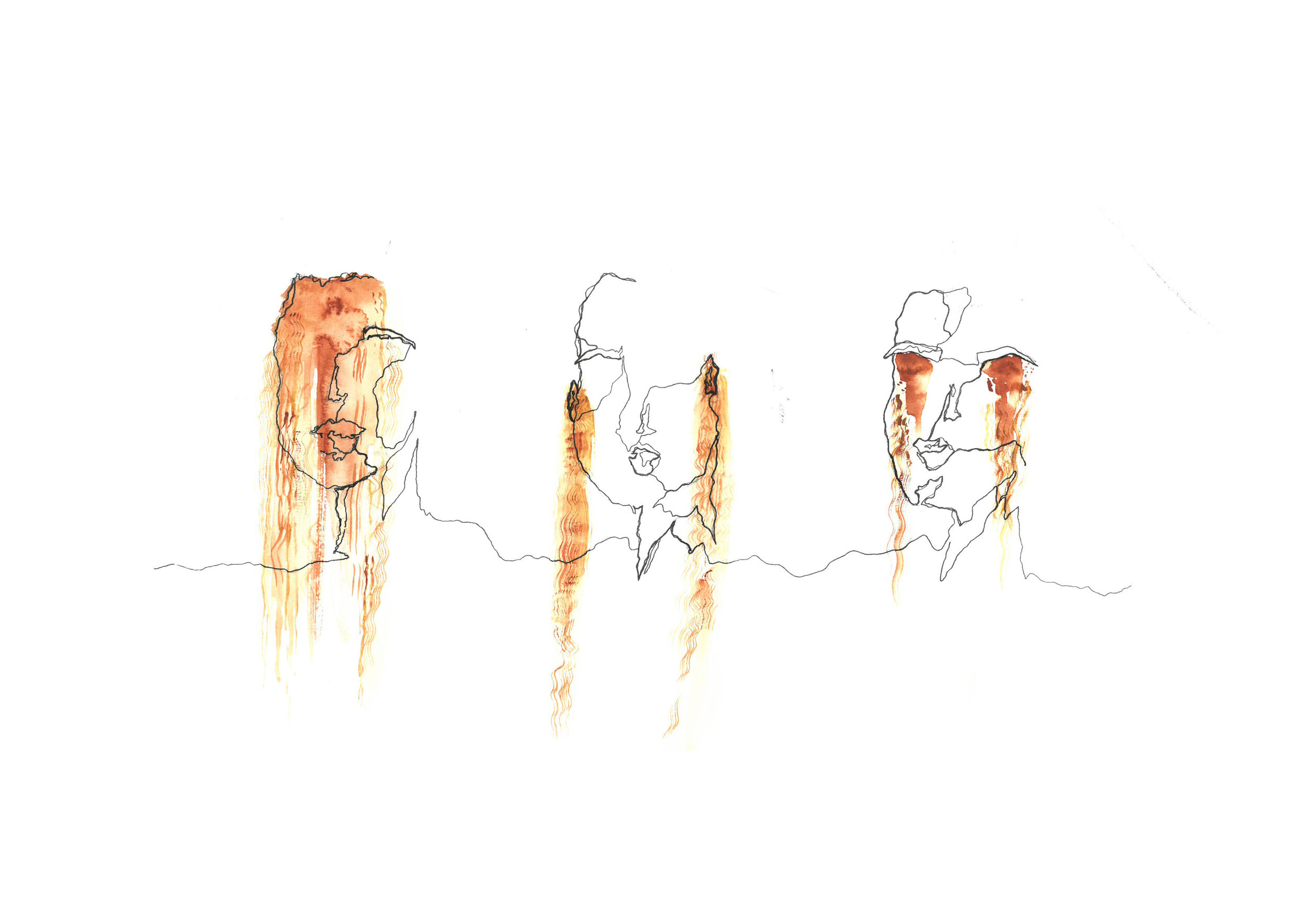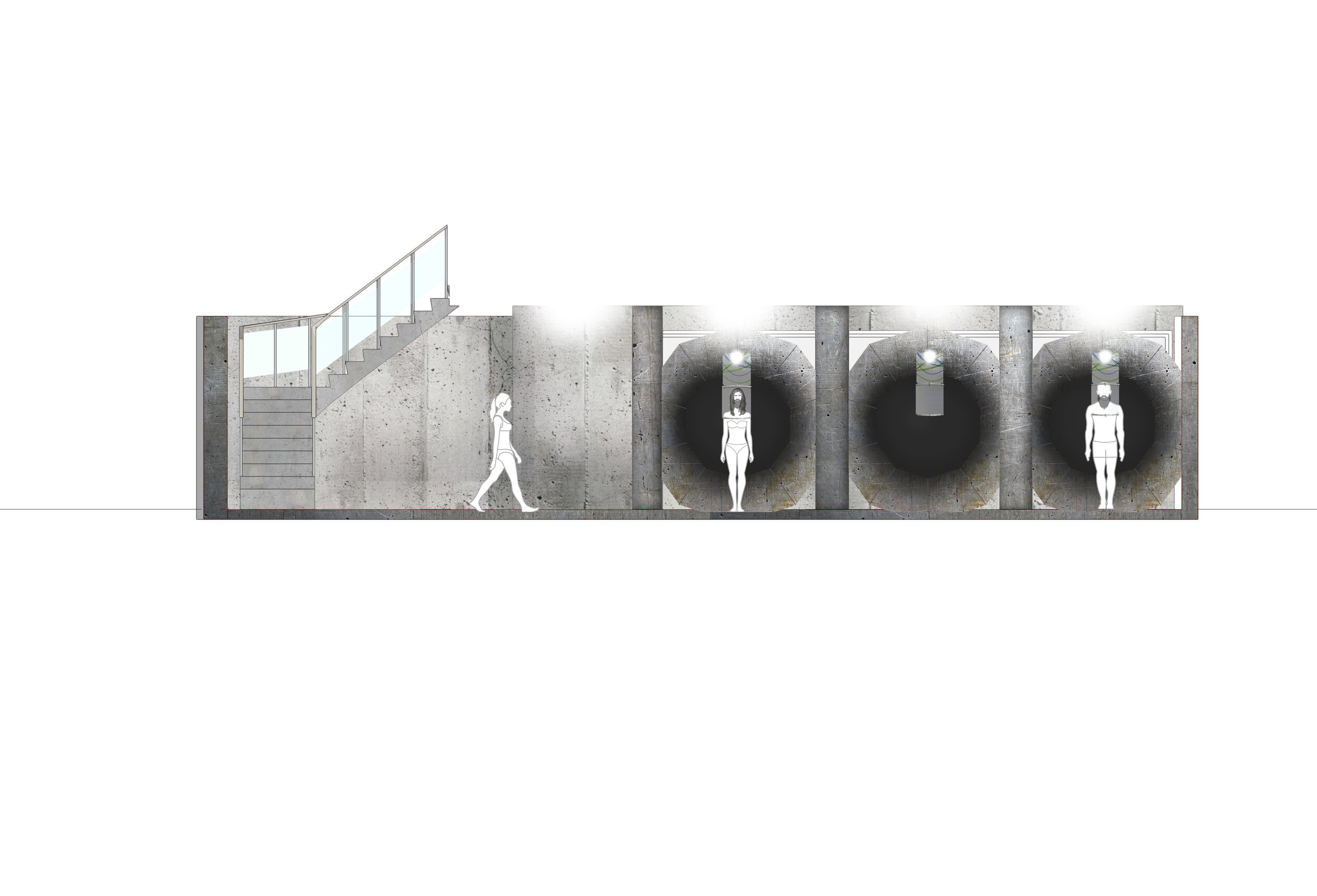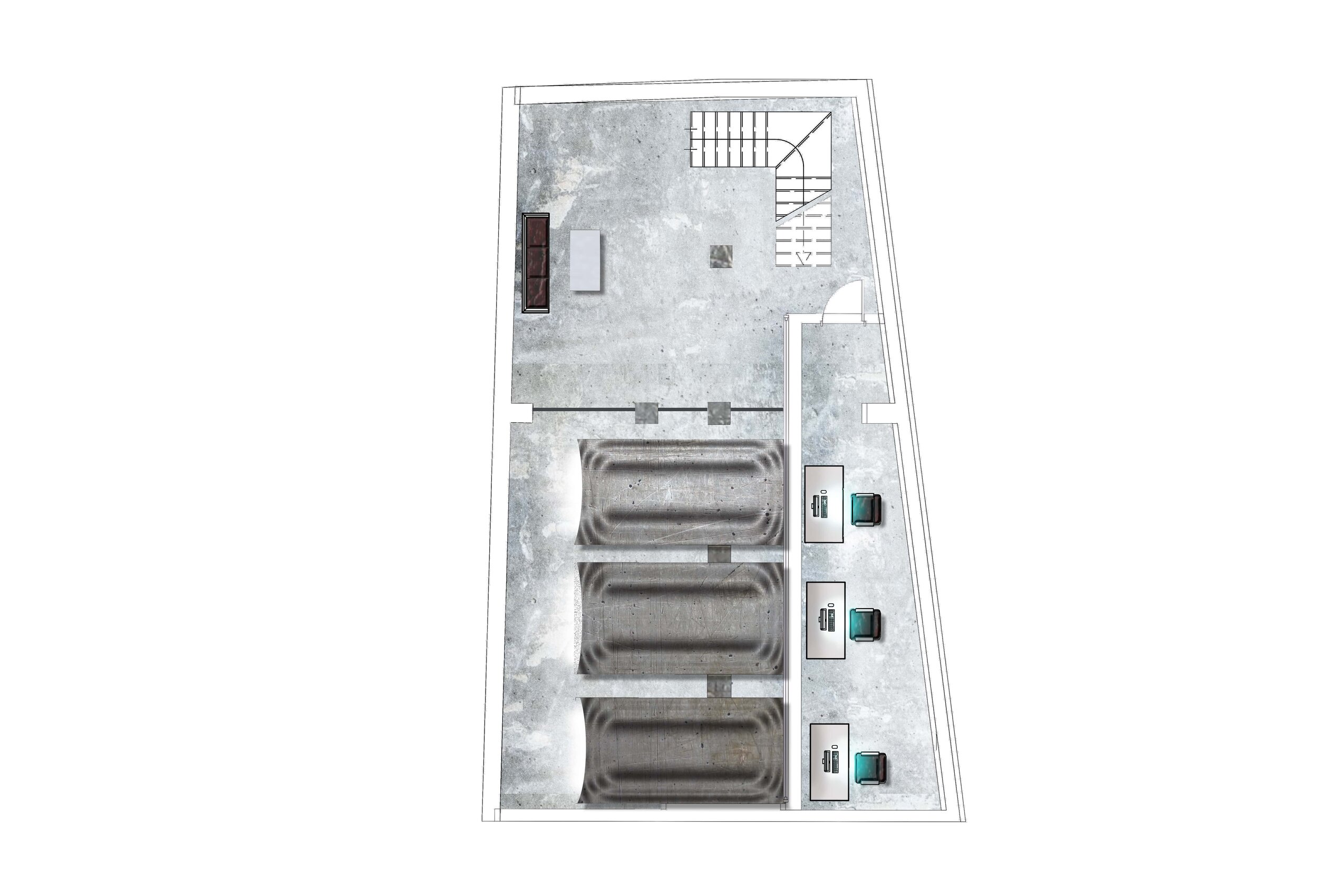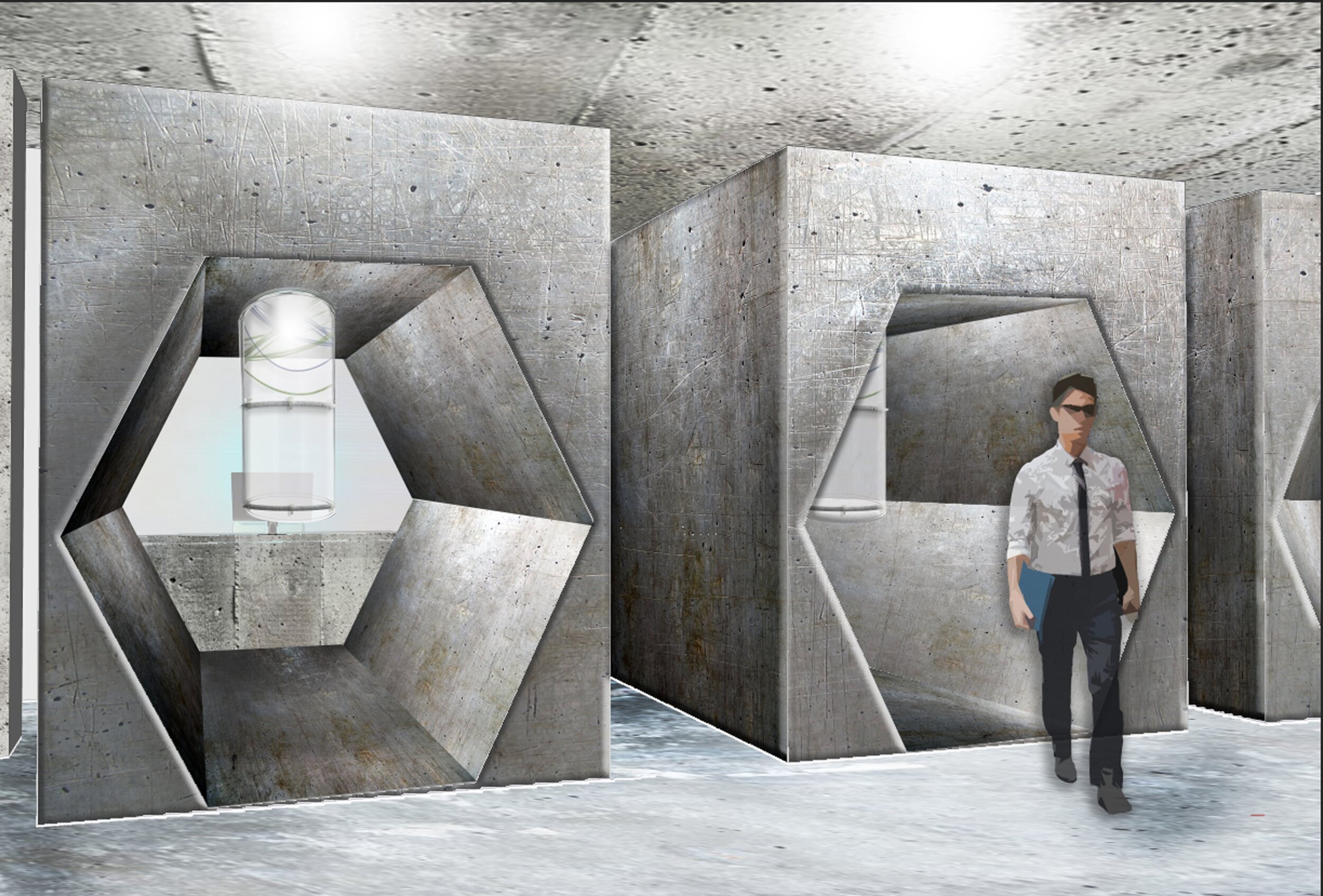
‘Barbering of the Future’ by Olivia Whiteley
BA (Hons) Interior Architecture and Design (2019-22)
Sheffield Hallam University, Sheffield, UK
Key supervisor: Steven Batty
Barbering of the Future: How far will surgery go?
Cosmetic surgery and body enhancements have been an upcoming trend that’s dominated the beauty industry in recent years. Social media pressures and the strive for photoshopped perfection becoming a growing pressure, we can only imagine how far we can really push our bodies. As procedures like liposuction, body contouring and hair transplants become ever popular, eventually I see a world dedicated to remodelling our natural appearance.
Briefed to reimagine a traditional barbershop, and speculate the future of the highstreet, I’d wondered whether surgery and hair would interlace again, as our very first barbers were considered to be ‘barber surgeons’, performing dentistry and some of the very first surgical procedures. Looking to the past, to speculate the future, I’d reimagined a barbershop operating room, in a series of spaces dedicated to hairy surgeries. In decades to come, eyelash extensions may stretch from our eyes to our feet, facial hair may bend gender norms entirely, till we’re eventually all disguising our natural appearance with hair.
Nested into Fitzalan Square in Sheffield, I’d pictured a backstreet barbershop, where clients would visit to undergo full body hair transplants. The journey begins, with an abandoned façade of a traditional barbershop. The aim would not be to entice people, with the treatment being exclusive to those daring enough to try it. Welcomed by a familiar setting of a hair salon, filled with barbershop chairs and a reception desk–a treatment room hides behind a series of mirrored doors. Greeted with a waiting area, this both allows patients the privacy of the treatment, but eliminates the surgery being discovered by people spying from behind the mirrored glass. The client would then walk into the surgery, filled with harsh, blinding lighting structures, that immerses a surgery bed. The whole room surrounding this remains a dark concrete, and hair is injected into the pores by a doctor.
I imagine the treatment to be new and almost dangerous in the future, thus meaning equipment isn’t easily accessible. A surgeon would create his own equipment, that’s nested meticulously into the walls of the surgery. After the surgery process, and hair is injected into the pores, customers would then go to the basement where they’d enter the ‘growing stage’. They’d place their head or area that’s been injected, into an incubator type structure, where hair would begin to grow and fill the container. This is the final stage of the treatment, and the beginning of the growing process. The tube structure speeds up the growing rate, acting as a catalyst for hair growth, and the patient is left with a face transplant of hair. Behind this, you’d find a space dedicated to research, used to monitor the growing stage, and ensure that the transition happens smoothly. After the treatment, customers can exit through a back entrance, keeping the identity of the barbershop hidden.
Olivia Whiteley / BA (Hons) Interior Architecture and Design / Sheffield Hallam University (2019-22)
My name is Olivia Whiteley, and I’m 20 from South Yorkshire. I’m currently in my second year, studying Interior Architecture and Design at Sheffield Hallam University, and I love to explore the weird and wonderful in the use of space and design.
hair transplants, body enhancements, surgery, dystopian, barbershop





